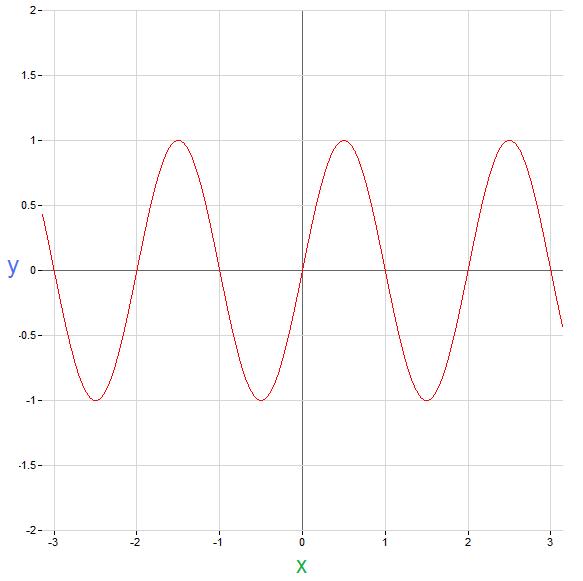(→Periodic Functions in Continuous Time) |
|||
| (6 intermediate revisions by one other user not shown) | |||
| Line 1: | Line 1: | ||
| + | =Periodic versus non-periodic functions ([[Homework_1_ECE301Fall2008mboutin|hw1]], [[ECE301]])= | ||
| + | <span style="color:green"> Read the instructor's comments [[hw1periodicECE301f08profcomments|here]]. </span> | ||
| + | |||
== Periodic Functions in Continuous Time == | == Periodic Functions in Continuous Time == | ||
| − | * Functions are classified as periodic if there exists <math>T\!</math> such that <math> | + | * Functions are classified as periodic if there exists <math>T>0\!</math> such that <math>y(x+T)=y(x)\!</math>. |
<br> | <br> | ||
The following is an example of a periodic function: | The following is an example of a periodic function: | ||
| Line 8: | Line 11: | ||
<center>[[Image:Sinpix_ECE301Fall2008mboutin.jpg]]</center> | <center>[[Image:Sinpix_ECE301Fall2008mboutin.jpg]]</center> | ||
| − | + | This function is periodic because <math>y(x)=y(x+T)\!</math> for <math>T=2, 4, 6\!</math> etc. | |
| + | |||
| + | == Non-Periodic Functions in Continuous Time == | ||
| + | * Functions are classified as non-periodic if there exists no <math>T>0\!</math> such that <math>y(x+T)=y(x)\!</math>. | ||
| + | <br> | ||
| + | The following is an example of a non-periodic function: | ||
| + | |||
| + | <center><math>y(x)=1/e^x\!</math></center> | ||
| + | |||
| + | <center>[[Image:Nonper_ECE301Fall2008mboutin.JPG]]</center> | ||
| + | |||
| + | This function is not periodic because there exists no T where <math>y(x)=y(x+T)\!</math>. | ||
Latest revision as of 07:19, 14 April 2010
Periodic versus non-periodic functions (hw1, ECE301)
Read the instructor's comments here.
Periodic Functions in Continuous Time
- Functions are classified as periodic if there exists $ T>0\! $ such that $ y(x+T)=y(x)\! $.
The following is an example of a periodic function:

This function is periodic because $ y(x)=y(x+T)\! $ for $ T=2, 4, 6\! $ etc.
Non-Periodic Functions in Continuous Time
- Functions are classified as non-periodic if there exists no $ T>0\! $ such that $ y(x+T)=y(x)\! $.
The following is an example of a non-periodic function:

This function is not periodic because there exists no T where $ y(x)=y(x+T)\! $.

